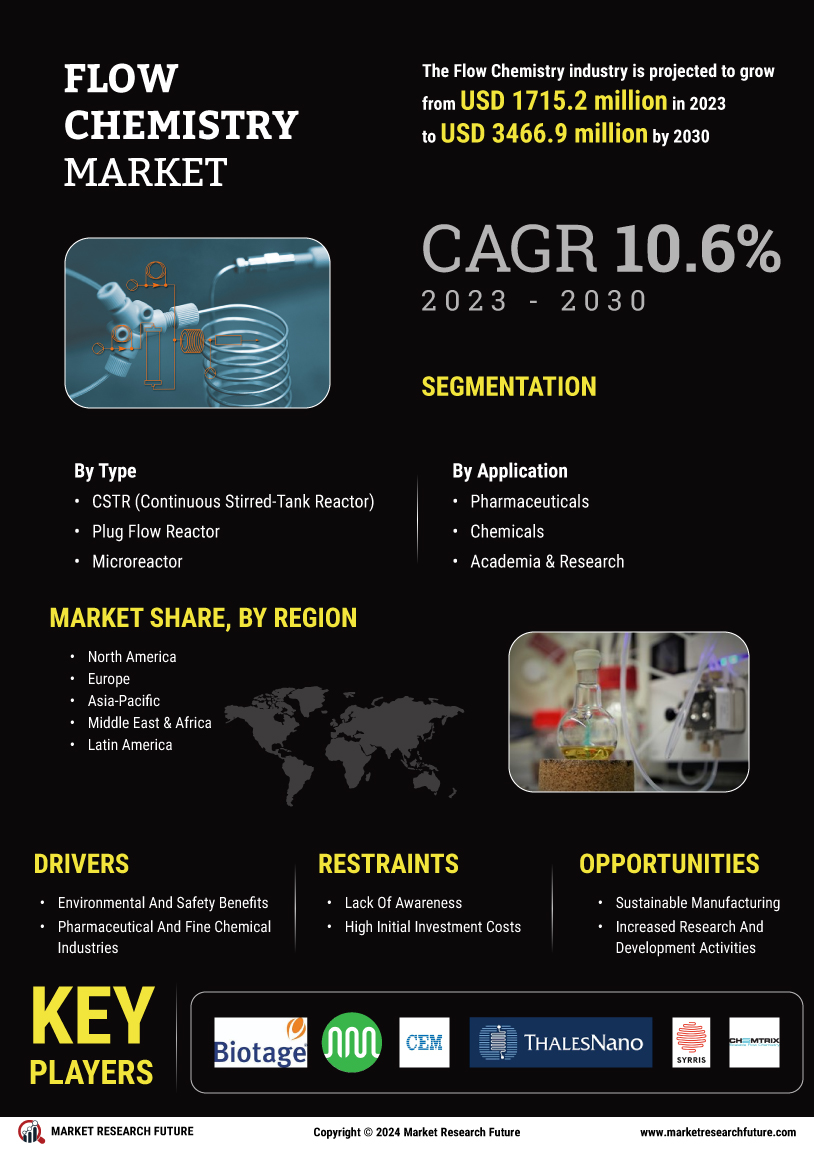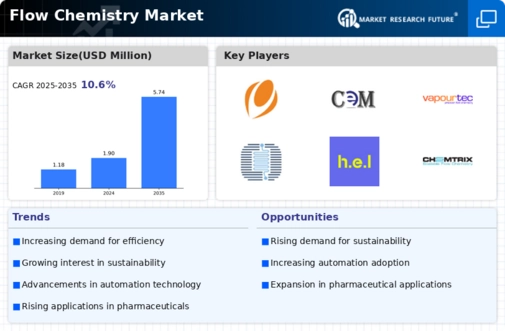Market Growth Projections
The Global Flow Chemistry Market Industry is projected to experience substantial growth, with estimates indicating a rise from 1.9 USD Billion in 2024 to 5.74 USD Billion by 2035. This growth trajectory suggests a compound annual growth rate (CAGR) of 10.56% from 2025 to 2035. Such projections reflect the increasing adoption of flow chemistry across various sectors, driven by technological advancements, sustainability initiatives, and the demand for efficient chemical processes. The market's expansion is indicative of a broader trend towards modernization in chemical manufacturing, highlighting the potential for innovation and investment in this field.
Advancements in Technology
Technological advancements play a pivotal role in driving the Global Flow Chemistry Market Industry. Innovations in microreactor technology and automation enhance the precision and scalability of chemical processes. These advancements enable researchers and manufacturers to conduct complex reactions with greater control and efficiency. For example, the integration of artificial intelligence in flow chemistry systems allows for real-time monitoring and optimization of reactions. This technological evolution is expected to contribute significantly to the market's growth, with projections indicating an increase to 5.74 USD Billion by 2035, highlighting the potential of technology to revolutionize chemical manufacturing.
Rising Demand for Specialty Chemicals
The Global Flow Chemistry Market Industry is witnessing a rising demand for specialty chemicals, which are often produced using flow chemistry techniques. These chemicals, used in various applications such as agrochemicals, coatings, and electronics, require precise synthesis methods that flow chemistry can provide. The ability to produce high-purity chemicals with tailored properties is increasingly sought after by manufacturers. As industries expand their product offerings and seek to meet specific customer needs, the flow chemistry market is expected to grow, reflecting the increasing importance of specialty chemicals in the global economy.
Increasing Pharmaceutical Applications
The pharmaceutical sector significantly influences the Global Flow Chemistry Market Industry, as flow chemistry offers unique advantages for drug synthesis. The ability to conduct reactions in a continuous flow minimizes reaction times and enhances safety, making it particularly appealing for pharmaceutical applications. For instance, the synthesis of complex molecules can be achieved more efficiently, reducing the time to market for new drugs. As the pharmaceutical industry continues to embrace flow chemistry, the market is poised for substantial growth, with a projected CAGR of 10.56% from 2025 to 2035, indicating a robust future driven by innovation in drug development.
Regulatory Support for Green Chemistry
Regulatory frameworks increasingly support the adoption of green chemistry practices, positively impacting the Global Flow Chemistry Market Industry. Governments worldwide are implementing policies that encourage the use of sustainable chemical processes, which aligns with the principles of flow chemistry. For example, initiatives aimed at reducing hazardous waste and promoting safer chemical alternatives are driving industries to adopt flow chemistry techniques. This regulatory support not only fosters innovation but also enhances the market's growth potential, as companies seek to comply with stringent environmental regulations while improving their operational efficiency.
Growing Demand for Sustainable Processes
The Global Flow Chemistry Market Industry experiences a notable surge in demand for sustainable and environmentally friendly chemical processes. Industries are increasingly adopting flow chemistry techniques to minimize waste and enhance efficiency. This shift aligns with global sustainability goals, as flow chemistry allows for continuous production and reduced energy consumption. For instance, the ability to conduct reactions in a controlled environment leads to higher yields and fewer by-products. As a result, the market is projected to reach 1.9 USD Billion in 2024, reflecting a growing commitment to sustainable practices across various sectors.
















